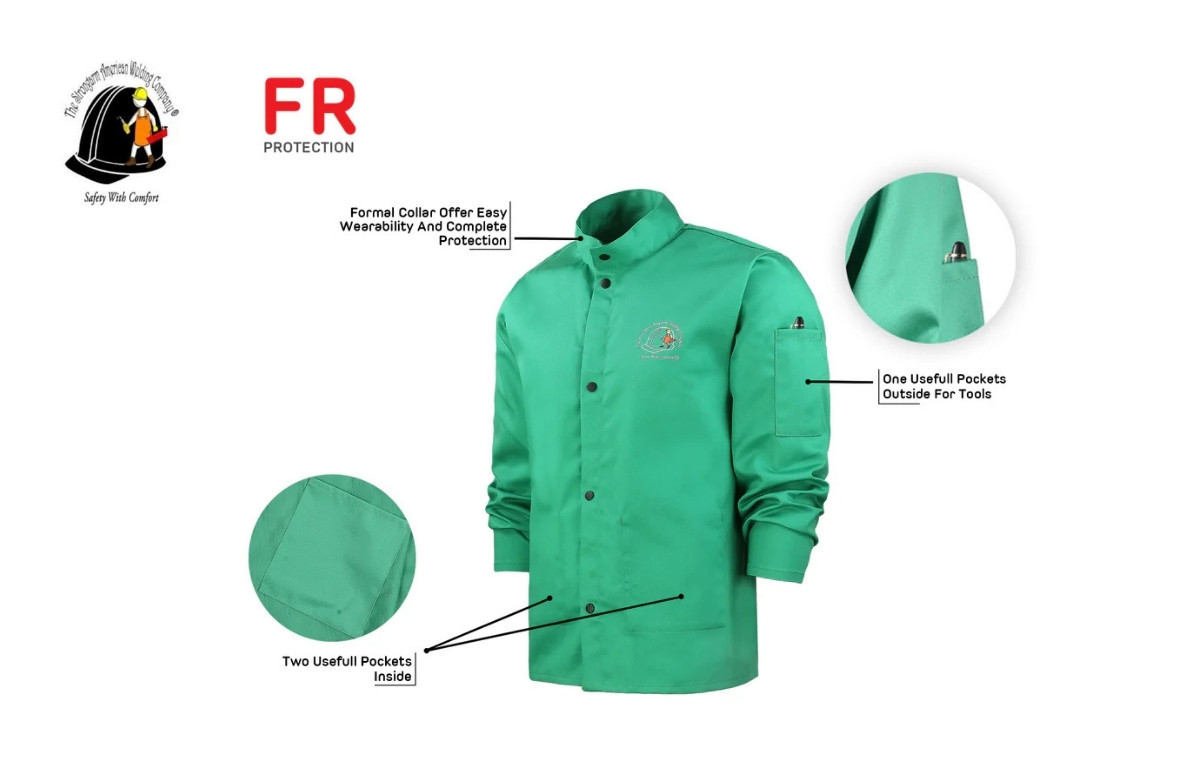When it comes to welding, safety is something no professional or hobbyist can overlook. Sparks, spatter, and extreme heat are part of everyday welding, and without proper protection, injuries are almost inevitable. A welding jacket serves as the first line of defense against these hazards, protecting your torso, arms, and neck from burns and ultraviolet rays. In the United States, where welders work across industries like construction, shipbuilding, manufacturing, and automotive repair, the demand for quality safety gear is higher than ever. Strongarm Welding understands these challenges and continues to provide reliable protective jackets designed to meet both safety standards and practical needs for everyday welders.
Why Welding Jackets Are More Than Just Clothing
A welding jacket is not just a piece of workwear—it is essential personal protective equipment. While helmets protect the face and gloves shield the hands, jackets cover the largest area of your body, which is also the most exposed during welding. Wearing ordinary shirts or hoodies is not only unsafe but also a direct violation of many workplace safety rules. Welding jackets are designed with flame-resistant materials that can handle sparks, molten metal, and prolonged exposure to heat. For welders in the U.S., where OSHA compliance is mandatory on many job sites, having the right jacket ensures not only safety but also professional credibility.
Understanding the Materials Used in Welding Jackets
Different materials are used to create welding jackets, and each one has its strengths and limitations. Leather has always been the top choice for heavy-duty welding because it provides excellent resistance against sparks and spatter. However, leather jackets can become uncomfortable in warmer states like Arizona or Florida because of their weight and heat retention. On the other hand, flame-resistant cotton jackets are much lighter, offering welders better mobility and comfort during long shifts. While they may not be as rugged as leather, they are effective for many types of welding work. Some manufacturers even offer hybrid jackets that combine leather sleeves for protection with cotton bodies for breathability, striking the perfect balance between safety and comfort.
How Climate and Job Type Influence Your Choice
Welding in the United States happens across different climates, from freezing winters in the Midwest to sweltering summers in the South. This makes choosing the right jacket heavily dependent on the environment. A welder in Minnesota may appreciate the insulation of a full-leather jacket, while someone working in California may prefer a flame-resistant cotton jacket to stay cooler on the job. The type of welding also plays a role in this decision. MIG and stick welding, which generate more sparks, usually demand heavier jackets, while TIG welding often allows for lighter options since it produces less spatter. Considering both the weather and your welding method will help you find the jacket that suits you best.
Features Every Welding Jacket Should Have
Not all welding jackets are built the same, and welders should pay attention to certain features before buying. A good jacket will have secure closures such as snaps or zippers that prevent sparks from slipping inside. Adjustable cuffs and high collars are also important because they block spatter from reaching the skin. Durability is another critical factor; strong stitching and reinforced seams make a jacket last longer under heavy use. Comfort should never be overlooked either, as welding often requires hours of movement and precision. A well-fitting jacket that allows flexibility will not only protect you but also help you maintain focus and efficiency while working.
The Importance of Durability and Maintenance
Welding jackets are an investment, and like all protective gear, they need proper care to last. For cotton jackets, regular washing with mild detergent keeps them clean without damaging their fire-resistant qualities. Leather jackets require a different approach—they should be wiped down with a damp cloth and occasionally conditioned to prevent cracking. Storage is just as important; hanging jackets in a cool, dry place helps them retain their shape and functionality. Checking for wear and tear is also necessary, because even a small tear in the material can compromise safety. Welders who take the time to maintain their jackets not only save money in the long run but also ensure they are always protected on the job.
Why Investing in the Right Jacket Matters
A quality welding jacket is more than just gear; it directly impacts your safety, comfort, and performance. Welders who choose the wrong jacket often find themselves either overheating, restricted in movement, or inadequately protected. The right jacket, on the other hand, allows you to work with confidence and efficiency, knowing that your body is shielded from sparks and heat. For professionals across the U.S., investing in high-quality jackets from trusted names like Strongarm Welding ensures that safety never comes at the cost of comfort. In industries where accidents can be life-changing, making the right choice in protective gear is one of the smartest decisions a welder can make.
Final Thoughts
The welding jacket is one of the most essential parts of any welder’s safety gear, offering protection from burns, sparks, and intense heat. Choosing the right one requires understanding the materials available, the type of work being done, and the climate you are working in. Features like strong stitching, adjustable cuffs, and comfortable design can make a significant difference in everyday use. Whether you are working in a small garage or a large industrial site in the United States, the right jacket keeps you safe and productive. Companies like Strongarm Welding are helping welders across the country stay protected with jackets that balance durability, comfort, and safety. At the end of the day, investing in the right welding jacket is investing in your future as a welder.






Comments